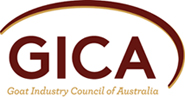The dairy goat industry, through its representatives on the Goat Industry Council of Australia (GICA), have requested the development of voluntary guidelines to assist producers control and eradicate Caprine Arthritis Encephalitis (CAE) from their herds.
These guidelines have been developed for use by veterinarians in partnership with their goat producer clients to achieve effective CAE control. The guidelines outline the practical steps in testing a herd and the key biosecurity practices to control and eradicate this disease.
CAE is a serious disease that causes major production losses in goats world-wide through mastitis, ill-thrift, arthritis, pneumonia, ascending paralysis and brain disease (encephalitis). CAE is also considered an animal welfare issue. There is no cure for CAE.
The disease is also known as ‘big knee’ and is caused by a lentivirus, which is a ‘slow’ virus with a long incubation period.
Impact of CAE
CAE is a production disease with market access and animal welfare implications for both milking animals (with production losses up to 25%) and for the production of healthy doe replacements.
Other economic impacts include high cull rates due to weight loss and arthritis, reproductive losses and animal deaths. Goats with CAE are more susceptible to other diseases such as Johne’s disease (JD), respiratory infections and internal parasites, and do not recover well from sickness generally.
Principles of CAE control
There are two pathways which can be followed for the eradication of CAE. The first is a test and cull, based on three monthly testing and segregating the test negative animals. The second pathway is a snatch-rear and segregation of the new born animals as a separate herd thereby establishing two herds. For the latter approach to succeed, a robust biosecurity plan must be in place and a closed herd maintained. Both methods have been used successfully in Australia and overseas.
Animal Health Australia together with GICA have produced a detailed booklet which can assist producers control and eradicate CAE.
Download the CAE Voluntary Guidelines
